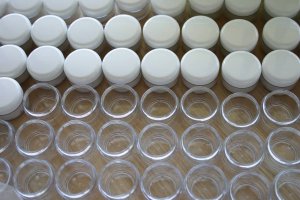The Top 10 Challenges Fragrance Companies Face

Although the use and creation of perfume dates back to the days when the world was young, modern perfumers face many challenges that have evolved over the course of time.
Generally speaking, it is much easier for novice retailers to disrupt and revolutionize selling techniques than it is for experienced and established sellers to alter mindsets and strategies that have always worked for them in the past.
Letting go is scary business, but it is only the intrepid explorer seeking new commercial realms that can rupture this blockage because that is the driving force of change in its most pervasive form.
The one constant in perfume creation down through the centuries has been its creative nature.
From the land of the ancient pharaohs to the modern world of cutting edge advances and innovation, boundaries and markets have expanded, new ingredients (both natural and synthetic) have been developed and refined, but artistry and skill remain the lodestone of scent formulation.
Modern fragrance companies must harness their imagination and ingenuity to address the many distinct hurdles that face balancing originality of design with modern consumer preferences and translating human emotions and inspiration into new and desirable scents.

A Few Fragrance Industry Facts And Important Statistics
The global perfume market size was valued at USD 50.85 billion in 2022 with expectations to achieve a compound annual growth rate (CAGR) of 5.9% from 2023 to 2030.
Market expansion is the result of the increasing clamor for personal grooming products and luxurious exotic fragrances. North America dominates the market, with the United States leading in fragrance revenue generation.
Improvement is always there waiting patiently in the wings, and there is a huge opportunity for expansion into nascent markets, niche categories and online channels such as: social media, e-commerce or subscription services.
Businesses need to look through objective glasses and carefully see what is causing problems with their profits and production. The answers are always there for those who wish to see.
Perfumers, like all others involved in commerce, need to do their homework and study market trends to learn how and where to expand their reach, vary their offerings, and enhance their current products.
Success may well lie in unexplored territory like Chinese, Indian or Brazilian markets where statistics indicate that the demand for perfume is rising or in niche segments like unisex or vegan sectors, where competition is weaker and there is more diversity.
The 10 Major Challenges Fragrance Companies Face Today
Fragrance creators and others associated with the perfume industry are faced with more than a few obstacles when formulating and marketing their products.
Currently, the top hurdles concern the following.
1. Creative Issues
The perfume industry is always under pressure from a dynamic and fickle base of consumers who demand a constant balance between new and different scents and an appeal to current market trends.
Niche perfumers, especially, are on a hard road when it comes to standing out among competitors and maintaining mainstream demands without sacrificing their artistic identity because their resources are usually limited.
A successful perfumer must cater to these preferences, making their journey from inspiration to scent rocky and indefinite.
There is always a constant trinity pull between artistry, innovation and commercial appeal.
In addition, capturing abstract moods and emotions into a tangible essence present their own challenges and much patience to overcome.
2. Technical and Scientific Challenges
Sourcing High-Quality Raw Materials
This means dealing with the variance in natural ingredients due to climate, harvest, or supply chain issues which increase rising costs and availability of rare ingredients like oud and sandalwood.
Sourcing raw materials is a double-edge sword as the process can decimate the ecosystems and cultures where they are cultivated.

The issue of sustainability cannot be ignored when producing perfume for the modern market place.
Recycling, reducing packaging emissions, pollution and waste all contribute to a carbon foot print that will help sustain future generations and ensure a positive environmental and social impact that will not affect the air, water, soil and biodiversity of Mother Earth.
The use and disposal of perfume takes a toll on human health and well being, and as such, can make a business subject to liability and ethical risks.
The global perfume industry is besieged by the ongoing issue of waste because manufacturers cannot do without plastic.
It is vital for distribution, recycling and application.
Navigating Synthetic vs. Natural Ingredients
This is not an easy bridge to cross and requires careful language and explanation. Consumers demand and deserve to know the truth about the products they buy and become loyal to brands that demonstrate transparency.
There can be technical difficulties in stabilizing volatile natural ingredients and there is no underestimating the time and effort involved in ensuring longevity and the silage of scent that will not overwhelm or fade too quickly.
Synthetic fragrances offer numerous benefits in perfumes and fragranced products, making them a cornerstone of modern perfumery.

3. Industry and Market Challenges
Perfume creators must submit to the rigid requirements demanded by the International Fragrance Association (IFRA), which restricts ingredients like citrus oils and oak moss due to concerns for the environment, containment of allergens and laws that vary from region to region.

There is always that time-consuming and costly tug-of-war between the reformulation of fragrance so that it always complies with legalities without losing a treasured signature character.
Standing out from competitors and appealing to a dynamic consumer base are often at odds with one another.
The increase and transparency of brands and “clean” beauty products have transformed fragrance creation.

Brand identity and differentiation can be achieved by keeping abreast about what is in demand by conducting market research and adjusting a company’s offerings.
This presents a significant hurdle to indie fragrances, most of which are formulated from tighter purse strings.
Catering to varied preferences and tastes across cultures and demographics can either be a bridge too far or not long enough, but it is vital to the continued economic success of a perfume.
4. Competition and Market Saturation
The rise of niche and indie fragrance houses coupled with established luxury brands and celebrity scents have inundated the market place.
Standing out from the more than 2,000 new fragrances launched every year while dealing with consumers overwhelmed by choice fatigue is no easy task.
Too many brands offer the similar humdrum product and experience.
According to a fragrance report conducted by ImgoenMatthews.com, driving more sales is dependent on quality over quantity, a brand’s credibility and a focus on engaging stories that tap into emerging trends.
This involves focusing on current issues such as: sustainability; global warming; awareness of the LGBTQ community, unisex scents and, most importantly, the perfume itself, which is the heart and soul of its appeal and success.

5. Adapting to Shifting Consumer Preferences
The perfumer must take on an extended role as both educator and student.
Modern consumers seek out those scents that are free from harmful synthetic chemicals and it is the mandate of the scent manufacturer to educate buyers about the safety and artistry involved in the use of these elements.
This is not common knowledge, often misunderstood and compounded by the fact that down through time, perfume houses have kept their formulas undisclosed, and now, for the sake transparency, must reveal all by listing every ingredient.
6. Technology and Cost Limitations
While advances in industrial science are a boon to the perfume industry in many ways, incorporating tools like AI and biotechnology to design molecules never before imagined or replicating rare fragrances is costly and intricate, requiring great skill and artistry.

Smaller fragrance houses are at a disadvantage because their funds are limited and they cannot compete with fragrance giants who dominate the sector of state-of-the-art, man-made synthetic formulations.
7. Counterfeiting And Brand Protection
Modern consumers have to take the time to learn how to purchase from only reputable sources (department stores etc) and how to recognize fakes when they see them.
Makers of bogus perfumes often devote their attention to visual ploys, carefully duplicating packaging and bottle design, which can make it a distracting puzzle for consumers to distinguish fakes from the real thing.
One thing that always parts the clouds and shows the real sky is the price.
If it seems like an incredible find that is too good to be true, it probably is (supporting that old idiom about “if it looks like a duck, walks like a duck and quacks like a duck, it probably is a duck”.)
Brands do try to protect themselves by employing strategies like trademarks, one-of-a kind packaging, holograms, serial numbers and alliance with law enforcement.
By utilizing online brand protections services, brands can effectively monitor for infringement of copyright and take action against perpetrators.
Counterfeiting deeply wounds the legitimate perfume industry, causing loss of revenue, consumer trust and brand reputation.
Imitations are often of poor quality and can contain harmful toxins and allergens.
8. Sharing Social Media Channels
Consumers today do not connect with fragrances the same way they did in decades past.
Thinking outside the box and creating new and unique interactions with customers is an effective channel for retailers to stand out amid an endless sea of social media posts.
Fragrance creators must find a way to balance the needs of their audience with artistry, skill, cutting edge innovation and business judgement.
Addressing fragrance trends geared toward particular target audiences, such as Gen Z consumers, must include a prolific cyber presence crowned by allegiance to TikTok.
The hashtag, #perfumetok, has received more than 5.2 billion views and can transform a niche fragrance into an object of cult worship that overwhelms this segment of the population seeking their magic fragrance.
9. The Demise Of Celebrity Fragrance
Stardom is the secret ingredient to any successful celebrity perfume.
This sectors was born in 1987 when Elizabeth Taylor launched Passion in collaboration with Elizabeth Arden.

This led to a male version, and in 1991 the release of White Diamonds, which was incredibly successful. It is said that she earned more from this single scent than from any of her roles in Hollywood films.
In 2018, its total sales were estimated at $1.5 billion.Truth be told, the majority of the populace is not impressed by celebrity fragrances anymore albeit the scents publicized by Rhianna and a few others have maintained brisk sales over the years.
It has lost its luster and cynical consumers view most of these endorsements as “same perfume, different celebrity.”
10. The Retail Experience Is Muddy, Dull And Antiquated
While perfume is a glorious, glamorous and delightful product, the retail experience has been stuck in the mud of prosaic advertising for some time.
Brands need to find a new groove, schtick or gimmick to attract and maintain traffic.
One way that has worked well for many perfume houses is to include the art of story-telling into a retail campaign.
Consumers love learning about the history of a scent, and discovering how and when it was created both harnesses the human imagination and lends a perceived quality to the fragrance.
Contemporary advertising is often outdated with a proliferation of the same type of images (couple smiling at each other; woman with flowers, etc), which loses whatever appeal it may have had in the past.
Dare to experiment with surprises, diverse angles and approaches.
In Conclusion
As a fragrance manufacturer and supplier, we at Alpha Aromatics face many of these technical, creative and market-driven challenges every day and have since our inception.
Our adjustment to these hurdles has made us stronger than ever as we have advanced our skills and artistry and remain both a leader and a pioneer within the dynamic perfume industry.
Support the ongoing efforts of this enduring market place and explore new niche and/or indie fragrances.
Thinking outside established boxes has moved things along down through time and will continue to do so as consumers of the day dare to dream and seek their own private scented corners of the world.
The post The Top 10 Challenges Fragrance Companies Face first appeared on Alpha Aromatics.
Source link

